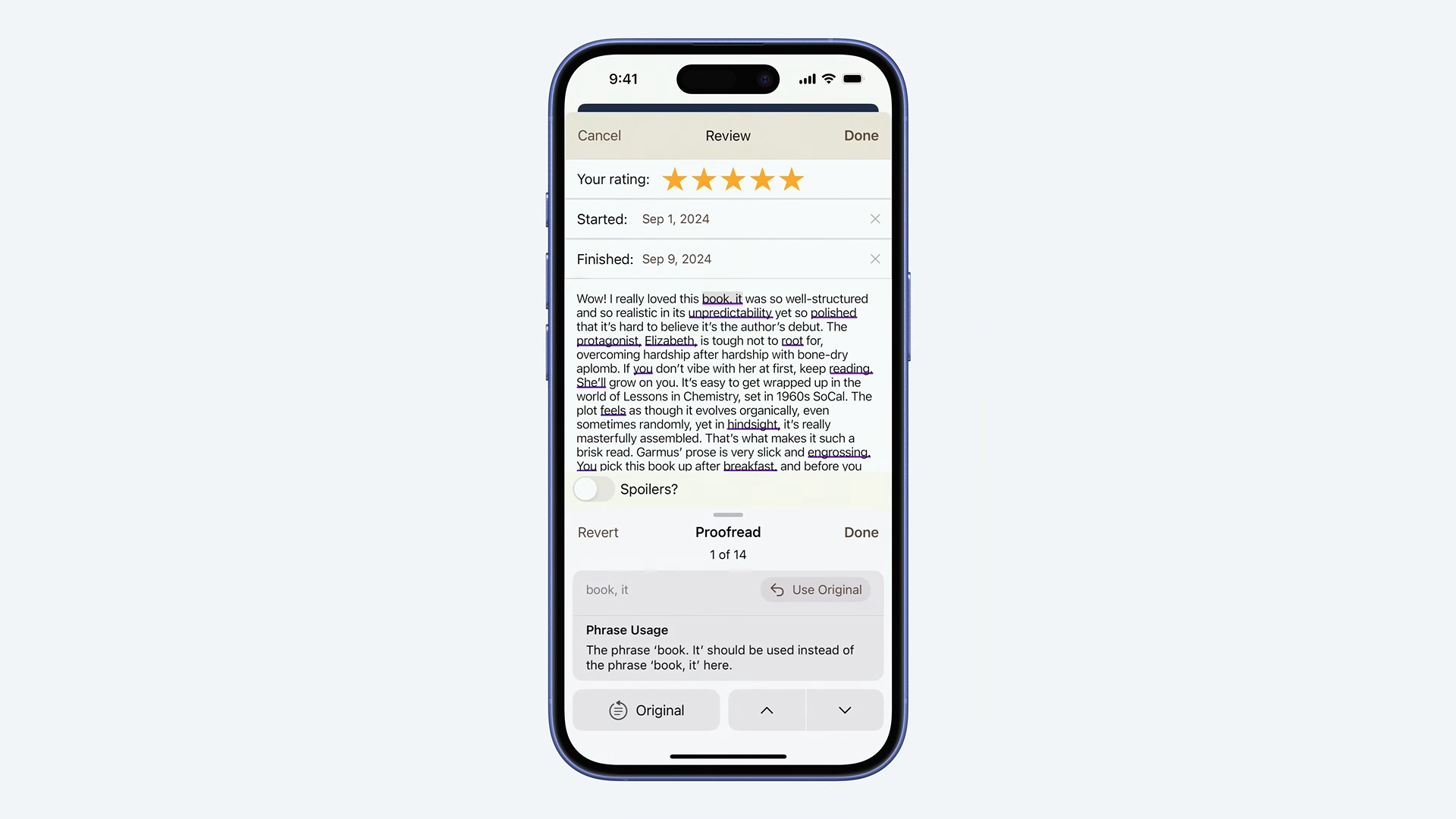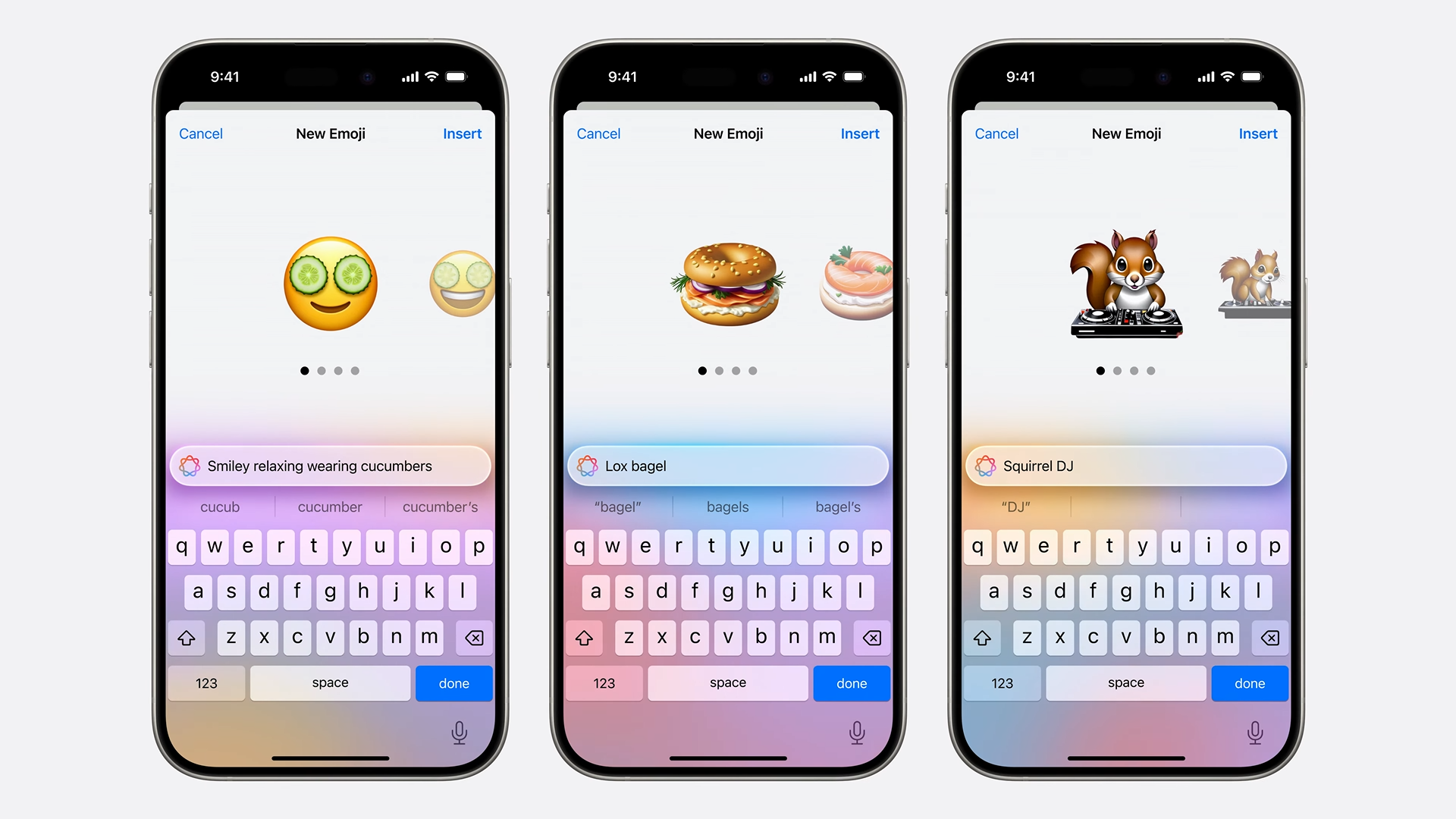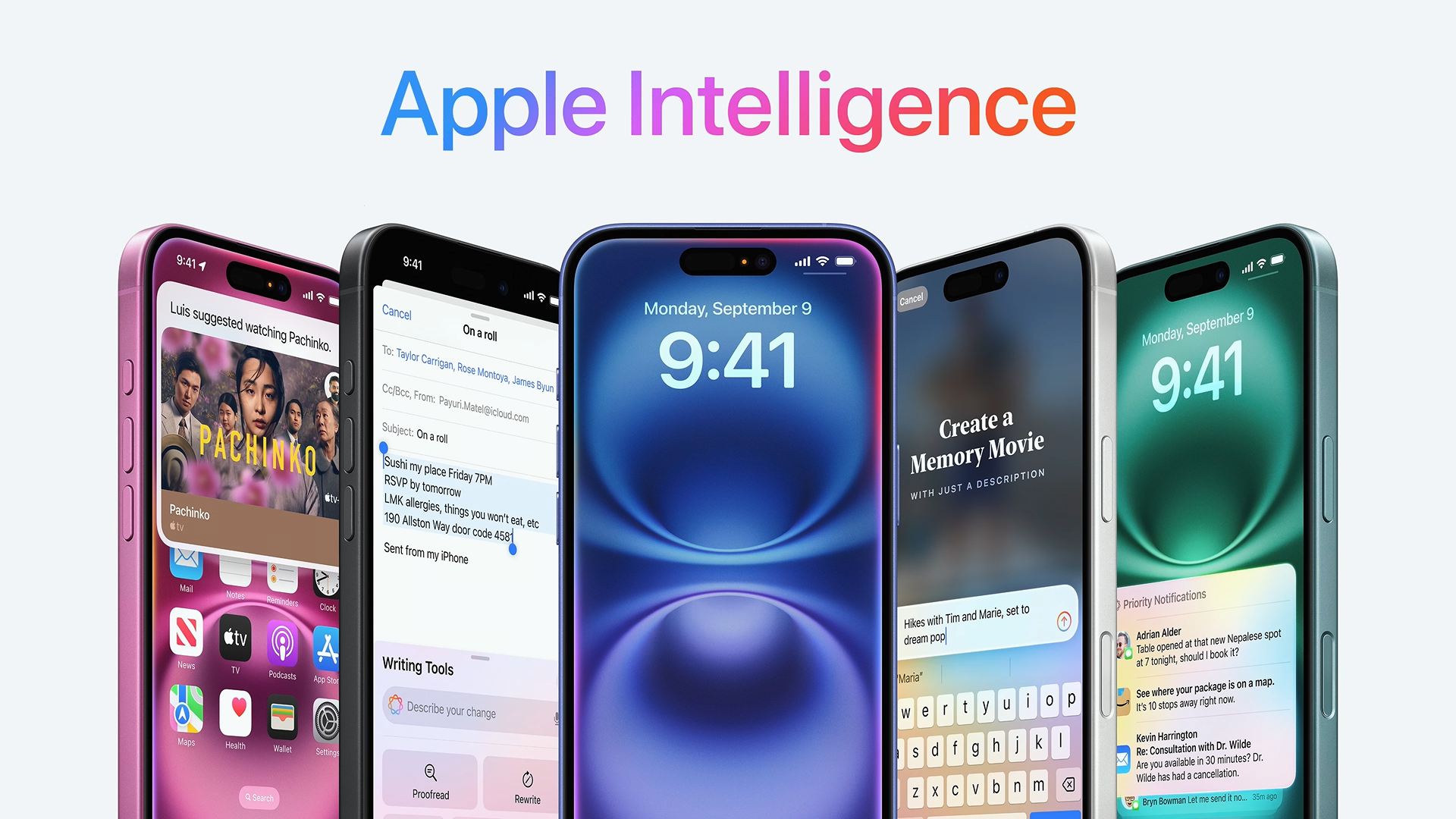Apple Intelligence — a breath of fresh air your iOS startup needs or a major headache? With its powerful features and deep integration into the iOS ecosystem, Apple Intelligence has the potential to disrupt the startup landscape.
In this blog post, we’ll dive into the new capabilities of Apple Intelligence, its impact on iOS developers, and which startups might be most affected. By the end, you’ll have a clearer picture of whether Apple Intelligence is an opportunity or a threat to your business model.
What Is Apple Intelligence?
Apple Intelligence is an artificial intelligence platform developed by Apple Inc. It combines the power of on-device generative and diffusion models with the ChatGPT integration. Apple Intelligence has rich awareness of users’ personal context and is deeply integrated into features and apps across the system.
“Apple Intelligence starts with our on-device foundation model, a highly capable, large language model. We were looking for the sweet spot, powerful enough for experiences that we wanted, and yet small enough to run on a device. Still, there’s some more advanced features that require larger models to reason over more complex data. So we’ve extended Apple Intelligence to the cloud with Private Cloud Compute to run those larger foundation models,”
Apple Intelligence is free to use and will be available in beta with iOS 18.1 in October. To get started, ensure your device and Siri language are set to US English. English-speaking users in Australia, Canada, New Zealand, South Africa, and the UK can expect a localized version of Apple Intelligence in December. Additional language support — such as Chinese, French, Japanese, and Spanish is coming in 2025.
It’s not yet clear when Apple Intelligence will be available for users in China and the EU given some regulatory hurdles. Apple Intelligence is compatible with the latest iPhone models, including the iPhone 15 Pro, iPad Pro, iPad Air, and Macs with the M1 chip and later.
Key Capabilities
Here’s a brief overview of the new capabilities that Apple Intelligence brings to the table.
Writing Tools. One can rewrite, proofread, and summarize text across Mail, Notes, Safari, Pages, Keynote, and third-party apps. Or adjust the tone of voice in a matter of a click to friendly, professional, or concise. Or automatically create a bulleted list of the key points from the text. Writing Tools have an integration with ChatGPT.

Audio Transcription. In the Notes and Phone apps, users can also record, transcribe, and summarize audio. When a recording is initiated while on a call in the Phone app, participants are automatically notified, and once the call ends, Apple Intelligence generates a summary to recall key points.
Priority Notifications. This feature understands the content of notifications and surfaces time-sensitive messages. And notifications are summarized, showing key details right on the Lock Screen.

Priority Messages in Mail: These automatically move time-sensitive emails to the top of the user’s inbox — whether it’s a last-minute meeting invite or a flight reminder. Each email is summarized, so the preview shows the most important information rather than “hope this email finds you well”.
Smart Reply in Mail: This functionality suggests relevant responses based on the content of the incoming email. Simply choose the option that best fits your reply, and you’re ready to send with just a few taps.
Image Playground. This is a standalone app, but its capabilities are available across other apps, such as Messages, Notes, Freeform, and Keynote. It lets you create unique images based on your descriptions, concepts, or even photos from your library. Users can experiment with different concepts and try out styles like animation, illustration, or sketch.
Image Playground lets you create custom Genmoji based on descriptions or photos to match any conversation. Preview your creations before you send them. Tweak your description until it’s perfect, and see the results instantly.

Image Wand. This tool turns sketches into visuals right in the Notes app. Simply circle your sketch with your finger or Apple Pencil, and Image Wand will analyze the surrounding content to generate a complementary image. Even if you’re starting with a blank canvas, Image Wand can use the context of your notes to create a fitting illustration.
Custom Memory Movie: Create a custom memory movie right in Photos. Simply enter a description of the story you want to tell, and Apple Intelligence will find the perfect photos and videos from your library. It crafts a unique storyline with chapters based on themes it identifies, creating a captivating movie with its own narrative.
Looking for a specific moment? Search for photos and videos by describing what you’re looking for. Apple Intelligence can even pinpoint exact moments within video clips that match your search, taking you directly to the scene you’re after.

Improved Siri. Besides a brand-new design, Siri can now be activated not only with voice commands but also with a double tap on the bottom of an iPhone screen. When users don’t want to speak, they can just type their request. Also, Siri now has a deep understanding of Apple products and can guide you through features and settings with step-by-step instructions.
With a richer understanding of natural language, Siri will understand users even if they stumble over words. The improved Siri also has onscreen awareness, meaning it can understand and take action with things on your screen. Enhanced awareness of users’ personal context enables Siri to take action in and across apps – from digging up specific photos and editing them to sending emails and call summaries on the user’s behalf.
How Apple’s Approach to AI Differs from Other Tech Giants
Apple’s approach to artificial intelligence stands out from that of other tech giants like Google and OpenAI. While these companies have focused on developing large language models (LLMs) like Gemini and ChatGPT, Apple has taken a more integrated and privacy-centric route:
- Privacy First: Apple’s AI, primarily known as Apple Intelligence, is designed to prioritize user privacy. Unlike many other AI models, Apple’s operates primarily on-device, meaning your data remains local and secure. Also, they built Private Cloud Compute, a dedicated server for handling ChatGPT requests securely.
- Tight Hardware Integration: Apple’s AI is deeply integrated into its hardware ecosystem. This ensures that the models can be optimized for specific devices, leading to better performance and efficiency.
- Focus on User Experience: Apple has primarily focused on improving its own apps with Apple Intelligence. This means the AI is tailored to specific Apple services, making it more relevant and useful for users.

“Apple’s strategy is smart because it doesn’t require building the best LLM. By focusing on a suite of smaller, more manageable generative models, they’ve struck a delicate balance between power and privacy. Instead of chasing the elusive ‘best’ LLM, Apple has built an AI ecosystem that truly understands its users,”
Indeed, Apple Intelligence becomes the AI that understands the user, their devices, and apps. For those broader, more general tasks, other AI models can step in. It’s a strategy that not only positions Apple for success but also empowers users with choice and control.
Impact on iOS Developers
Apple Intelligence beta is already available for developers to explore. So, should iOS developers rush to embrace Apple Intelligence? Well, there’s plenty of time. As with any betas, it may have glitches and bugs.
Also, Apple’s generative AI features are coming in waves, with some arriving in October, others later this year, and another set due sometime before the middle of next year. Developers should stay updated on Apple Intelligence’s development and consider waiting for more mature features or tools.
The Good News
Apple Intelligence empowers iOS developers to create innovative and engaging apps that cater to the evolving needs of users. Let’s go over the new opportunities of the iOS ecosystem and how those can improve the user experience:
- App Intents. Siri is getting smarter this year. It can now do hundreds of new things in and across apps, thanks to improvements in App Intents. This framework lets apps interact with Siri, Shortcuts, and other Apple experiences. Initially, Apple Intelligence will support these app categories: books, browsers, cameras, documents, files, journals, mail, photos, presentations, spreadsheets, whiteboards, and word processors. More categories will be added in the future.
- App Entities. App entities allow Siri to understand content from an app and provide users with information from the app from anywhere in the system. Together, App Intents and App Entities allow users to connect content from different apps. For example, a user can add a summary from Notes to an email in Superhuman.
- Image Playground API. With this API, you can empower your users to create unique images right within your app. No need for external models or servers. This can add a fun and personalized touch to your app, like allowing users to generate custom avatar pictures.
- New UITextViewDelegate methods. With these, developers can have better control over user interactions with text, allowing them to respond to changes dynamically, track text modifications, or even customize the app’s response to Writing Tools’ behavior. It also gives developers control over which writing assistance features are available within a UITextView and how they behave in different contexts.
The Bad News
Despite these upgrades and room for innovation, Apple Intelligence presents several challenges, such as:
- Device Limitations: While Apple Intelligence is designed to run on-device, it requires the latest hardware and excludes users with older devices.
- Data Privacy Concerns: Although Apple prioritizes privacy, there are always concerns about the collection and use of user data, even if it’s processed locally. Developers must be mindful of how they handle and protect user data.
- Developer Learning Curve: Learning to effectively utilize Apple Intelligence’s capabilities may require a significant investment of time and effort for developers. This could be especially challenging for those who are new to AI and machine learning.
- Integration Challenges: Integrating Apple Intelligence into existing apps can be complex, especially for apps with large codebases. Developers may encounter technical difficulties or compatibility issues.
- Potential for Misuse: Like any powerful technology, Apple Intelligence could be misused. For example, it could be used to generate misleading or harmful content. Developers must factor in these risks.
How Apple Intelligence Affects Startup Ecosystem
Apple’s entry into the AI market could intensify competition for startups, especially those operating in similar domains.
Apple has cultivated a reputation for creating innovative, user-centric products that seamlessly integrate within its ecosystem. This approach, while often lauded for its convenience and ease of use, has raised concerns about its potential to stifle competition.
Apple has a tendency to create products and services that can render third-party alternatives obsolete. For example, the introduction of iMessage with RCS support in iOS 18 has been seen as a strategic move to reduce reliance on messaging apps like WhatsApp. By offering a more feature-rich and integrated messaging experience, Apple aims to incentivize users to stay within its ecosystem.
Similarly, Apple’s Passwords app, which provides a centralized solution for password management, could potentially diminish the need for third-party password managers like LastPass and 1Password.
Apps That May Take a Hit
As far as Apple Intelligence is concerned, we believe it may negatively affect the bottom lines of apps from the following categories:
- Proofreading and Writing Tools. Apple’s native writing tools with AI-powered capabilities like grammar correction, sentence restructuring, and summarization may reduce the reliance on third-party tools like Grammarly, QuillBot, and ProWritingAid.
- Image Editing Apps & Generators. Apple’s image generation capabilities could reduce the need for the so-called “ChatGPT wrappers”, especially for basic tasks like creating simple graphics or altering images. With its Clean Up tool, users will also be able to remove unwanted objects from their photos, which eliminates the need for object removal apps like TouchRetouch.
- Audio Transcription & Summarization Apps. Apple’s voice recognition and AI-driven transcription tools could impact companies like Otter.ai, which provides transcription services for meetings and conversations.
- Personal AI assistants. The supercharged Siri that will not only understand the user’s personal context but complete several tasks across apps may eliminate third-party AI assistants like Chat AI or Pi: Personal AI.
The extent of its impact will depend on factors like the quality of Apple’s features, user adoption, and the ability of these startups to differentiate their offerings.
Also, Apple Intelligence powered by beefy hardware makes it clear that the future of AI gadgets is likely to be centered around smartphones. This leaves startups like Humane and Rabbit R1 scrambling.
Apps That Will Co-Exist
- Professional Photo & Video Editing Software. While Apple Intelligence significantly enhances editing capabilities for casual users, professional photographers and videographers will still rely on advanced features offered by Adobe’s specialized software like Lightroom and Premiere Rush.
- Note-Taking Apps. Third-party note-taking software like Bear Notes, which uses standard editable text views, can enable all the Apple Intelligence features for their users without any development effort. So, they only benefit from this upgrade.
- Language Translation Apps. While Apple’s Translate app has a lot of potential, it is much inferior to AI translator apps like DeepL. Apple Translate supports 18 languages, whereas DeepL over 30. The accuracy and the quality of the translations are also far from perfect, especially for longer and more complex passages.
Our Expertise with iOS App Development
Redwerk has been developing iOS apps since 2015. Our team of skilled engineers and designers has a deep understanding of Apple’s ecosystem, ensuring that our apps are not only visually appealing but also perform seamlessly on all iOS devices.
We’ve built a solid portfolio of successful iOS apps, including industry-leading solutions like Gooroo. Redwerk can help you achieve your business goals and tap into the power of Apple Intelligence. Our iOS development services cover:
- Product Development From Scratch: Redwerk has helped numerous businesses build award-winning iOS apps from the ground up. When working on a restaurant management solution for Quandoo, we took care of the entire MVP development, including the UI/UX design.
- AI Integration. Whether you need to update your app with Apple Intelligence features, import your own on-device model, or integrate with third-party genAI tools, we’ve got the expertise. We constantly learn and adapt to the latest iOS features and trends, ensuring we leverage all AI capabilities optimally for your app’s benefit.
- App Maintenance. With our app maintenance services, you can keep your app running smoothly and scale our involvement wherever upgrades are needed. This flexibility allows you to keep your app relevant at a fraction of the cost of the full-time in-house team.
Here, you’ll find the latest breakdown on app development costs. By partnering with us, you can harness the full potential of Apple Intelligence and create innovative iOS apps that stand out from the competition.
Wrapping Up
Apple Intelligence is shaking things up in the iOS app world. It’s got some really cool features and fits seamlessly into the Apple ecosystem. But like anything new, there are both upsides and downsides for developers and startups.
If you want to make the most of Apple Intelligence, it’s important to understand how it could affect your business. By weighing the challenges and opportunities, you can decide if it’s the right move for your app.
Ready to explore how Apple Intelligence can benefit your iOS app? Contact Redwerk today for a free consultation. Our team of experts will guide you through the complexities of this powerful tech and help you come up with a winning plan for your app.





